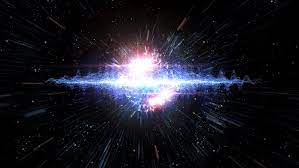Ancestor Of Supermassive Black Hole Of Universe Found

Apr 14: Scientists studying the origin of the universe have for the first time discovered what they call it the “Cosmic Dawn”. It’s believed to be the ancestor of a supermassive black hole, which has properties that lie in-between those of a galaxy and a quasar (objects powered by black holes a billion times as massive as our sun).
Dubbed GNz7q, the object is located in a galaxy that is forming stars 1,600 times faster than our own galaxy, the Milky Way. The stars, in turn, create and heat cosmic dust, making it glow in the infrared to the extent that GNz7q’s host is more luminous in dust emission than any other known object at this period of the Cosmic Dawn.
Astronomers found the mysterious object when they scoured data from the Hubble space telescope’s observations.
“Understanding how supermassive black holes form and grow in the early universe has become a major mystery. Theorists have predicted that these black holes undergo an early phase of rapid growth: a dust-reddened compact object emerges from a heavily dust-obscured starburst galaxy, then transitions to an unobscured luminous compact object by expelling the surrounding gas and dust,” Associate Professor Gabriel Brammer, Niels Bohr Institute said.
Astronomers said that GNz7q was found at the center of an intensely studied sky field known as the Hubble GOODS North field.
The newly discovered object presents the first evidence of the transitioning, rapid growth phase of black holes at the dusty star core.
The team is hopeful that with the James Webb Telescope in the final stages of commissioning, it will be possible to observe these mysterious objects in better detail.
Disclaimer: Except Headline The Article is sourced from external sources.





